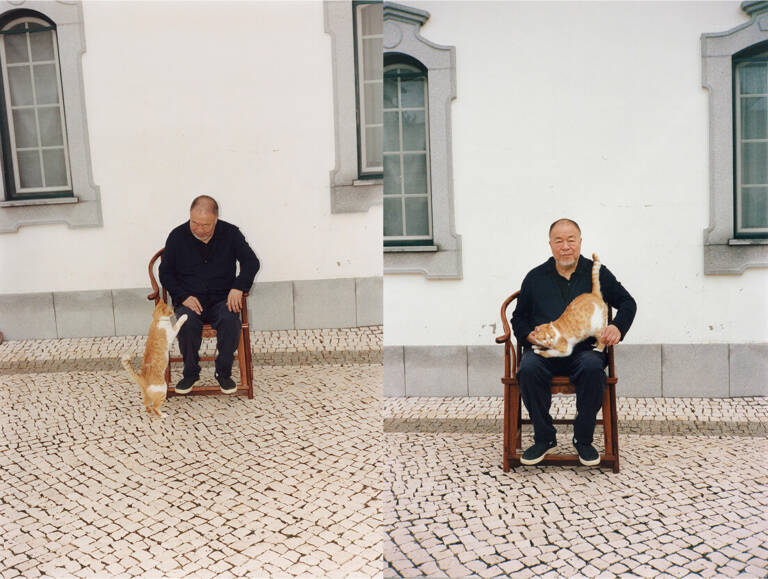Ai Weiwei is a name synonymous with innovation and creativity in the contemporary art world. His works challenge societal norms and push the boundaries of what is considered acceptable.
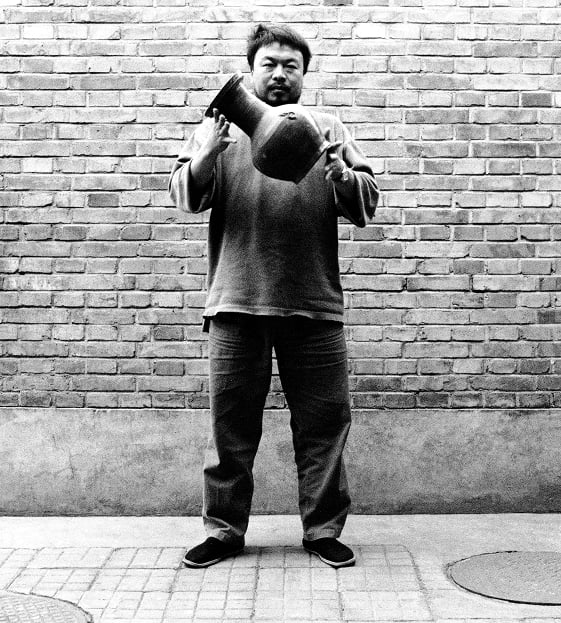
Dropping a Han Dynasty Urn, 1995

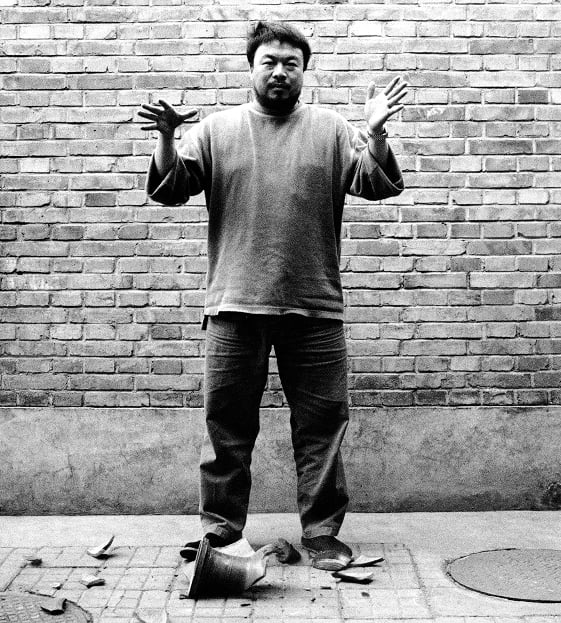
With a career spanning multiple disciplines, Ai Weiwei has established himself as a pivotal figure in modern art. His thought-provoking installations and sculptures have captivated audiences worldwide, sparking conversations about politics, culture, and human rights.
The art of Ai Weiwei is not just about aesthetics; it’s about challenging our perceptions and encouraging us to think differently. As we explore his work, we gain insight into the mind of a true visionary.
The Revolutionary Vision of Ai Weiwei
Ai Weiwei’s artistic journey is a testament to his innovative spirit and cultural heritage. His rise to global prominence is a story of merging traditional Chinese art forms with contemporary concepts, creating a unique aesthetic that has captivated audiences worldwide.
From Beijing to global recognition
Ai Weiwei’s path to international recognition began in Beijing, where he was exposed to the city’s vibrant art scene. His early work was influenced by his father, Ai Qing, a renowned poet, and his experiences during the Cultural Revolution. As he gained recognition, Ai Weiwei’s art evolved, incorporating elements of activism and social commentary. His installations, such as Sunflower Seeds, have been exhibited globally, showcasing his ability to merge traditional craftsmanship with contemporary themes.
Merging traditional Chinese art with contemporary concepts
Ai Weiwei’s artistic philosophy is rooted in the fusion of traditional Chinese techniques with modern concepts. He often employs ancient craftsmanship, like porcelain making, to create large-scale installations that comment on contemporary issues. For instance, his Sunflower Seeds installation, comprising 100 million handcrafted porcelain seeds, critiques mass production and individuality. This blend of old and new has not only elevated Ai Weiwei’s status as a pioneering artist but also contributed significantly to the global contemporary art discourse.
Courtesy of TATE
The Profound Art of Ai Weiwei: Blending Activism with Aesthetics
The art of Ai Weiwei is a testament to the power of creativity in challenging authority and pushing boundaries. Through his work, Ai Weiwei has consistently demonstrated an ability to merge activism with aesthetics, creating pieces that are both visually striking and intellectually stimulating.
Conceptual foundations and artistic philosophy
Ai Weiwei’s artistic philosophy is rooted in his experiences and observations of Chinese society and politics. His work often critiques the Chinese government’s stance on human rights and freedom of expression. Key elements of his conceptual foundation include:
- Challenging authority and social norms
- Exploring the relationship between individuality and conformity
- Using traditional Chinese materials and techniques in contemporary contexts
Detention and its influence on his creative expression
Ai Weiwei’s detention by Chinese authorities in 2011 had a profound impact on his work. The experience further galvanized his commitment to activism through art. Since his release, Ai Weiwei has continued to produce works that are both a reflection of his personal experiences and a commentary on broader social issues.
Some notable works post-detention include installations and exhibitions that highlight human rights abuses and the need for greater transparency and accountability.
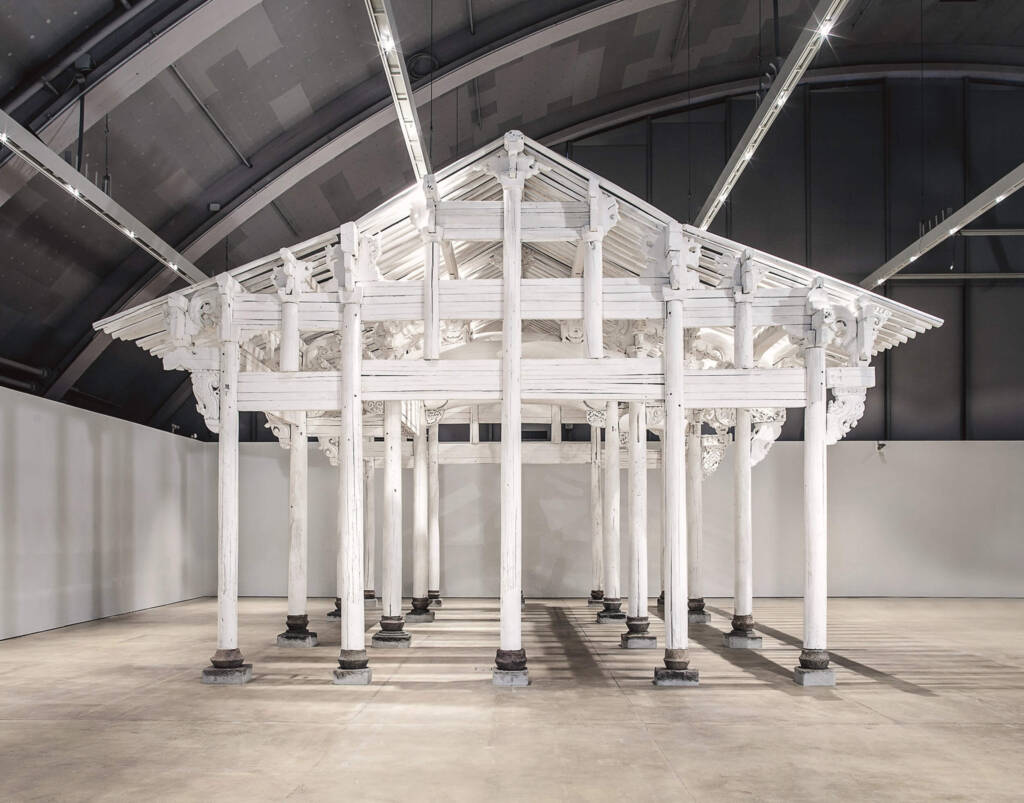
White House, 2015
Photography by MAIJA TOIVANEN, courtesy of HAM
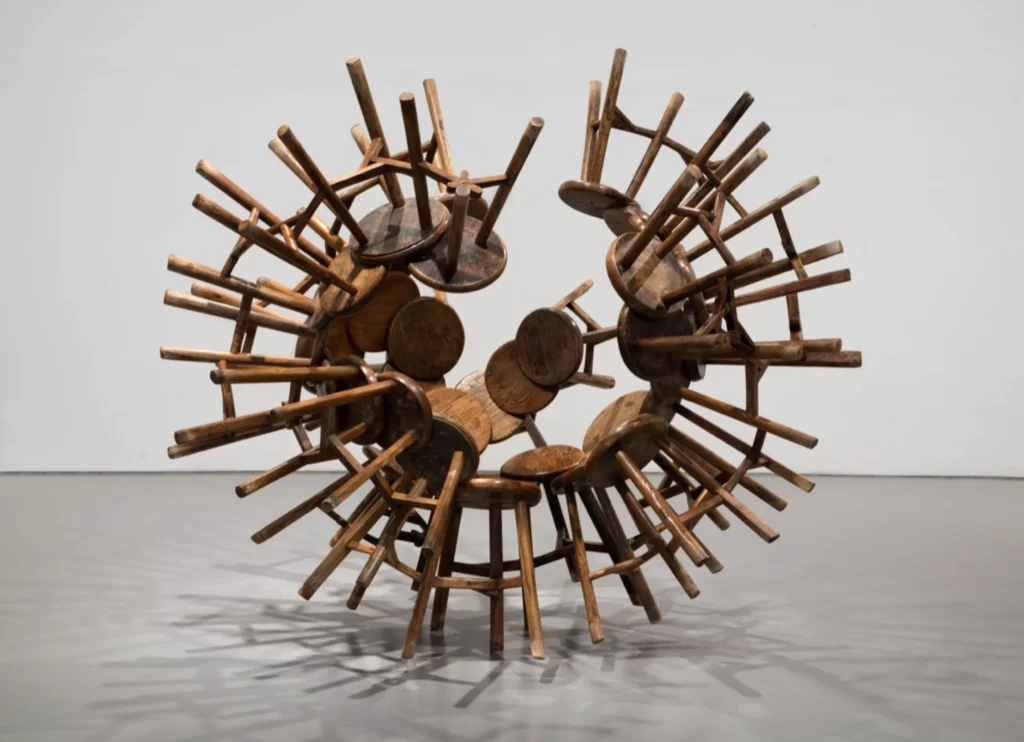
Grapes, 2011
Courtesy of AI WEIWEI STUDIO
‘Sunflower Seeds’: A Monument to Chinese Craftsmanship and Critique
Ai Weiwei’s iconic Sunflower Seeds installation is a testament to the painstaking craftsmanship of Chinese artisans and a critique of modern Chinese society. This monumental work, first exhibited at the Tate Modern in 2010, consists of 100 million handcrafted porcelain sunflower seeds.
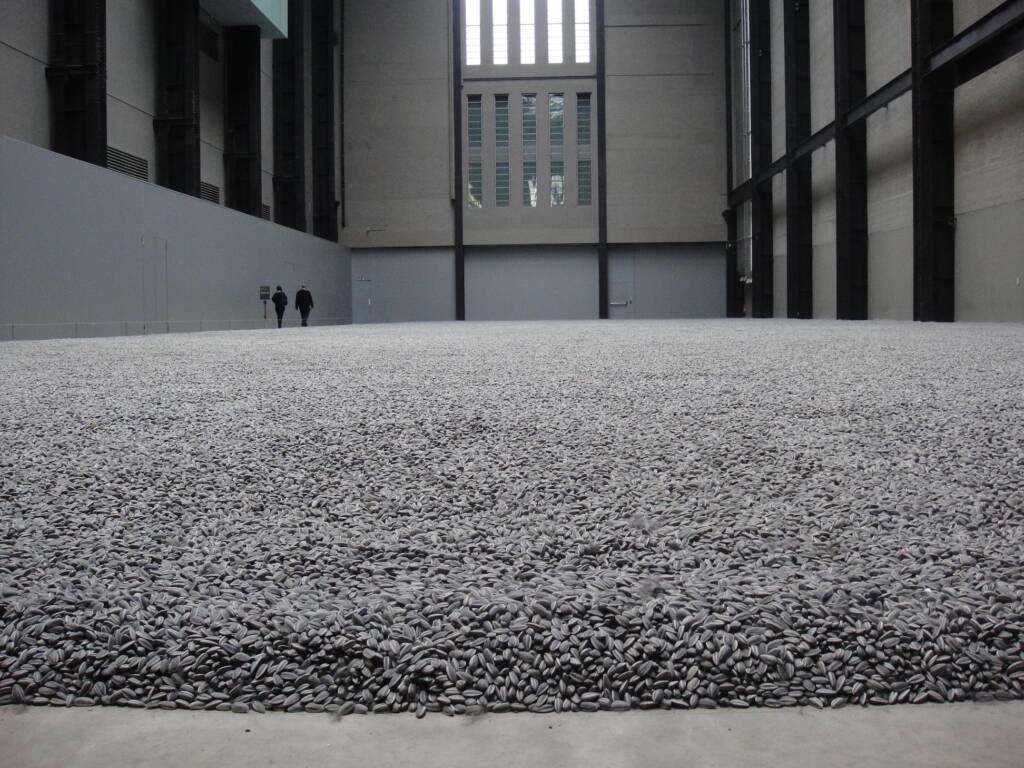
Kui Hua Zi (Sunflower Seeds), 2010, one hundred million hand painted porcelain seeds; TATE MODERN, London
Photography by WALDOPEPPER, CC BY-NC 2.0) © AI WEIWEI
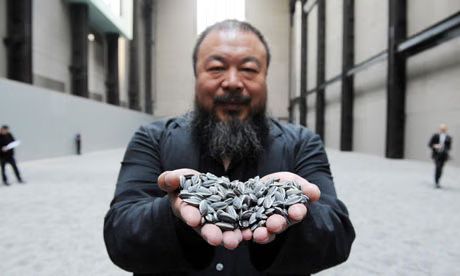
Photography by FIONA HANSON/PA
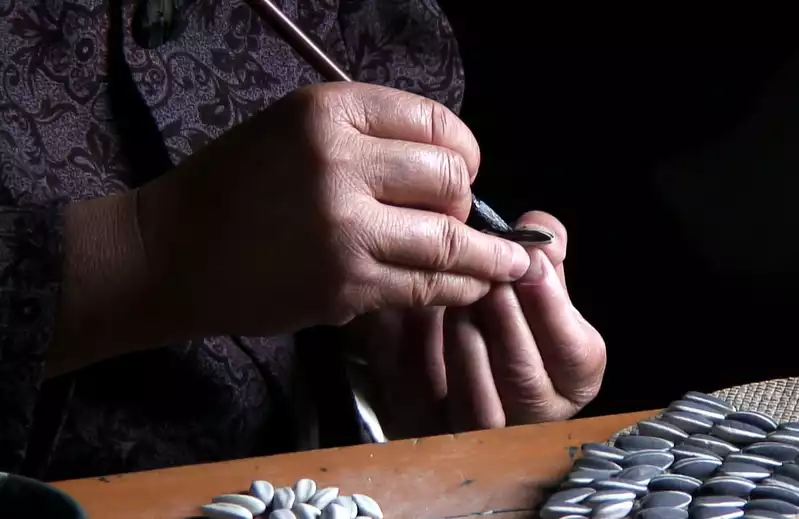
Courtesy of AI WEIWEI STUDIO
The painstaking creation of 100 million porcelain seeds
The creation of Sunflower Seeds was a massive undertaking that involved artisans from Jingdezhen, a city known for its porcelain production for centuries. Each seed was hand-painted, showcasing the incredible skill and dedication of the craftsmen involved.
Mass production, individuality, and political commentary
Sunflower Seeds is not just a display of craftsmanship; it’s also a commentary on mass production and individuality in China. The seeds, while identical in shape, were each uniquely painted, highlighting the tension between uniformity and individuality. The work critiques the Chinese government’s emphasis on mass production and control.
- It challenges the viewer to consider the human cost behind mass-produced goods.
- It reflects on the loss of individuality in the face of industrialization.
- It serves as a powerful political commentary on the Chinese economy and society.
Remembering by Ai Weiwei: Honoring the Forgotten
Ai Weiwei’s Remembering project is a poignant tribute to the lives lost in the Sichuan earthquake. This initiative not only memorialized the victims but also highlighted the government’s inadequate response to the disaster.
Documenting the Sichuan earthquake victims
Ai Weiwei’s team painstakingly documented the names of the students who perished in the earthquake, creating an extensive online database. This effort was a response to the government’s reluctance to release the names of the victims, underscoring the tension between artistic expression and governmental control.
Courtesy of CIRCA
Transforming statistics into powerful human stories
By collecting and publishing the names, ages, and backgrounds of the victims, Ai Weiwei transformed cold statistics into powerful human stories. This approach personalized the tragedy, making it more relatable and impactful for the public.
The Remembering project not only honored the victims but also served as a critique of the government’s handling of the disaster. It exemplified Ai Weiwei’s ability to merge art with activism, creating a lasting impact on public discourse.
Ai Weiwei’s Lego Artworks: Building Resistance Brick by Brick
Ai Weiwei’s artistic expression knows no bounds, as evidenced by his innovative use of Lego bricks. His Lego artworks are not just creative expressions but also powerful statements that highlight social and political issues.
Ai Weiwei has utilized Lego bricks to create portraits of political prisoners and activists, bringing attention to their stories and struggles. This use of Lego bricks as a medium for political commentary underscores the versatility and impact of his art.
Portraits of political prisoners and activists
Ai Weiwei’s decision to use Lego bricks for portraits of political figures is a testament to his ability to merge art with activism. The Lego bricks, often associated with childhood play, take on a more serious role in Ai Weiwei’s hands, serving as a reminder of the individuals behind the political narratives.
The Battle Against Corporate Censorship
Ai Weiwei faced significant challenges when he attempted to use Lego bricks for his art, particularly in his project to create portraits of political prisoners. Lego’s corporate policies and the subsequent censorship he encountered led to a notable legal and public relations battle.
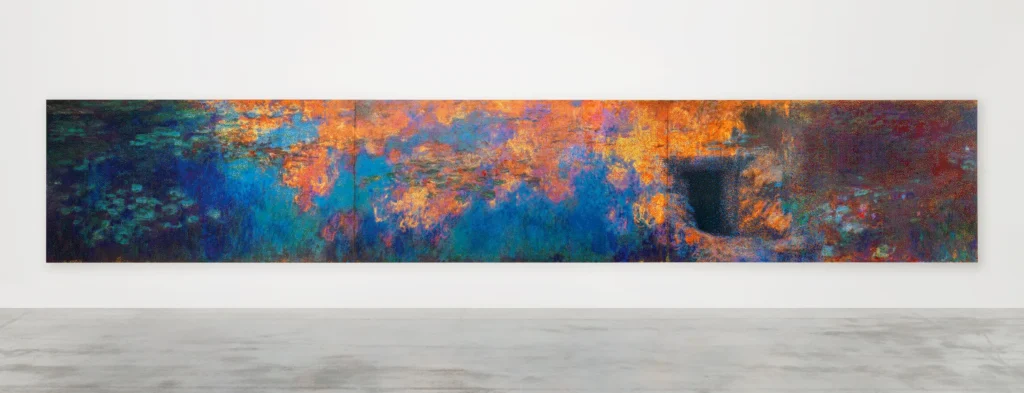
Water Lilies #1; made out of 650,000 Lego bricks
Photography by ELA BIALKOWSKA/OKNO STUDIO
Global Impact and Cultural Resonance
Ai Weiwei’s innovative approach to art has not only captivated audiences globally but also redefined the boundaries of cultural expression. His work, a blend of activism and aesthetics, has made a significant impact on the international art scene.
Influence on Museums and Art Institutions
Ai Weiwei’s art has been showcased in museums and galleries worldwide, influencing curatorial practices and exhibition themes. His ability to merge traditional Chinese art with contemporary concepts has inspired a new wave of cultural exhibitions.
Inspiring a New Generation
Ai Weiwei’s commitment to social justice and human rights has inspired a new generation of artists to incorporate social consciousness into their work. His influence extends beyond the art world, fostering a culture of activism and awareness.
Why Ai Weiwei’s Artistic Voice Remains Essential Today
Ai Weiwei’s artistic journey is a testament to the power of art in challenging societal norms and inspiring change. Through works like Remembering by Ai Weiwei, he sheds light on critical issues, making his voice indispensable in contemporary art and social discourse.
His ability to merge traditional Chinese art with contemporary concepts has not only elevated his global recognition but also influenced a new generation of artists. By using various mediums, from porcelain to Lego bricks, Ai Weiwei continues to push boundaries, making his art a reflection of both personal expression and societal commentary.
The relevance of Ai Weiwei’s work lies in its capacity to provoke thought and inspire action. As the world grapples with issues of censorship, human rights, and social justice, his art serves as a reminder of the importance of challenging the status quo and promoting change.
In his own words, Ai Weiwei reveals how art transforms objects into statements, how time inscribes meaning, and how reality and imagination coexist.
